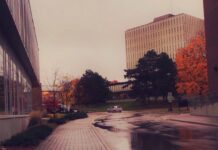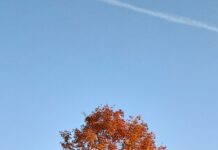On Friday, July 28 and Saturday, July 29, get ready, the first ever UWaterloo campus BioBlitz is being hosted by the UW Sustainability Office.
A BioBlitz (or bioblitz) is a community-led effort to identify and record as many species as possible in a particular area over a short period of time. The first Bioblitz took place over a period of 24 hours in 1996 in Washington, D.C. sponsored by the National Parks Service. Since then thousands of BioBlitzes have occurred globally.
“The BioBlitz is an amazing opportunity to learn about biodiversity on campus, especially flora and fauna you may not have noticed before, such as bats, aquatic invertebrates, and butterflies,” said Michelle Angkasa, communications and outreach assistant at the Sustainability Office.
Bioblitzes are an effective way to bring communities together — individuals and organizations, professionals and amateurs — all engaging with each other to collect biodiversity data. A 2023 study published by Oxford University Press in the BioScience Journal determined that bioblitzes are critical for conserving and protecting biodiversity. They identified five possible bioblitz outcomes significant to the progression of biodiversity awareness, records, and conservation.
Creating a species inventory is one of these outcomes. The campus bioblitz has at least 10 different species categories listed at different times for the bioblitz – moths, bats, birds, plants, trees, and insects to name a few. The goal for the campus bioblitz is to have a developing species inventory for these categories of creatures on campus.
A second important outcome of bioblitzes is engaging people in biological recording. iNaturalist, a popular global recording app, is the platform being used to capture bioblitz data. Over 50 million observations have been made on the platform. Anyone can record biological data and read the recordings of others to learn about local biodiversity. Bioblitzes increase the accessibility and interest in these activities.
Discovering a species new to an area is another beneficial outcome of bioblitzes. Bioblitzes create a historical record of species in an area: when a new species is observed, its presence can be reviewed. Invasive species can be tracked this way. The data collected may then aid in restoring ecosystem health.
As part of the BioBlitz on campus, guided hikes led by species experts will be held. Each hike focuses on different species of animal or plant found on campus. A presentation about birds of prey will be given by the Mountsberg Raptor Centre, and there is a campfire scheduled for Friday evening. To register for these events, visit the Sustainability Office webpage at https://uwaterloo.ca/sustainability/events/bioblitz and follow along on Instagram @uwaterloosustainable
Join the community in learning about the species on campus, contributing to the biological record, and just enjoying the outdoors.





























